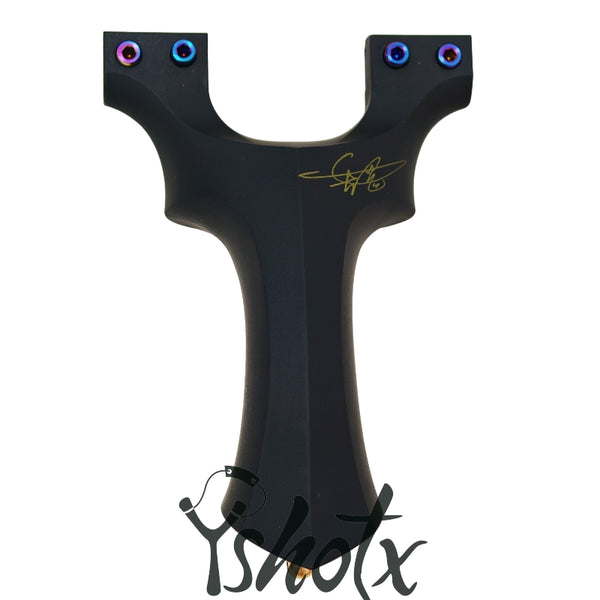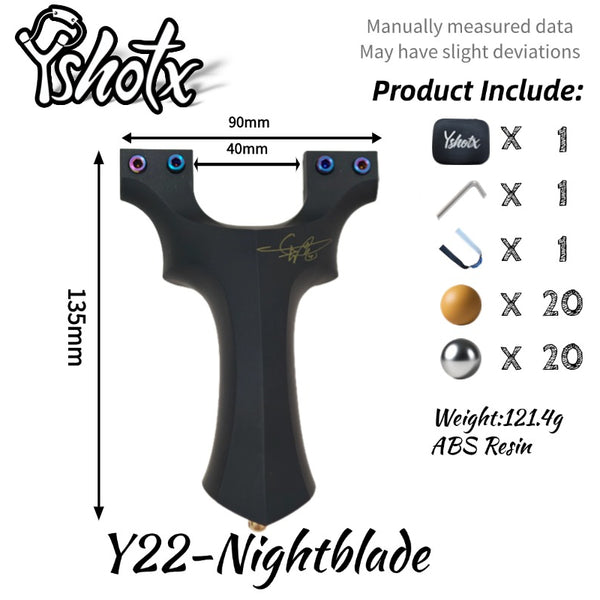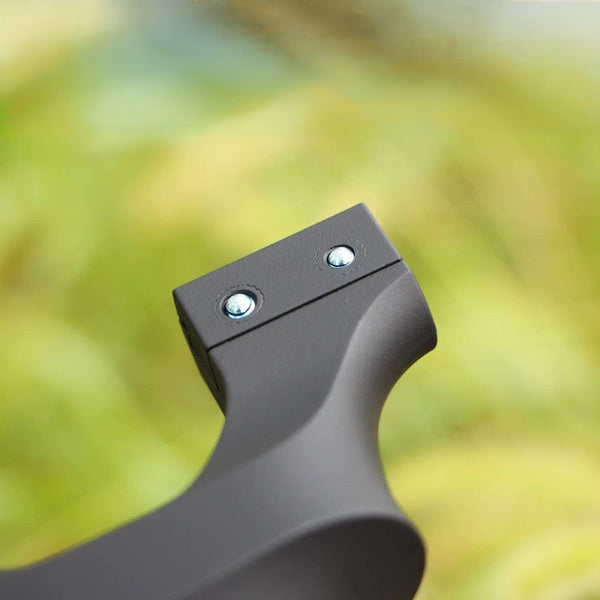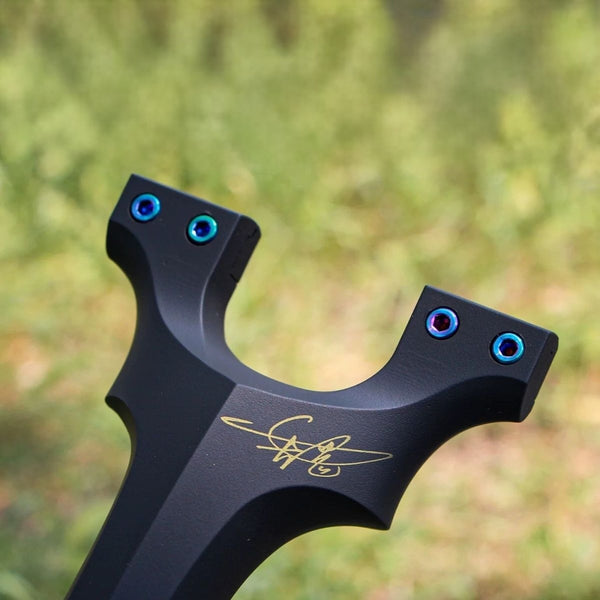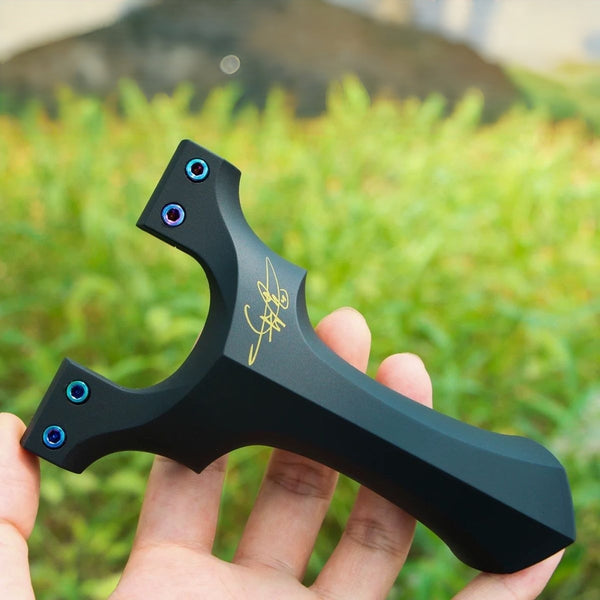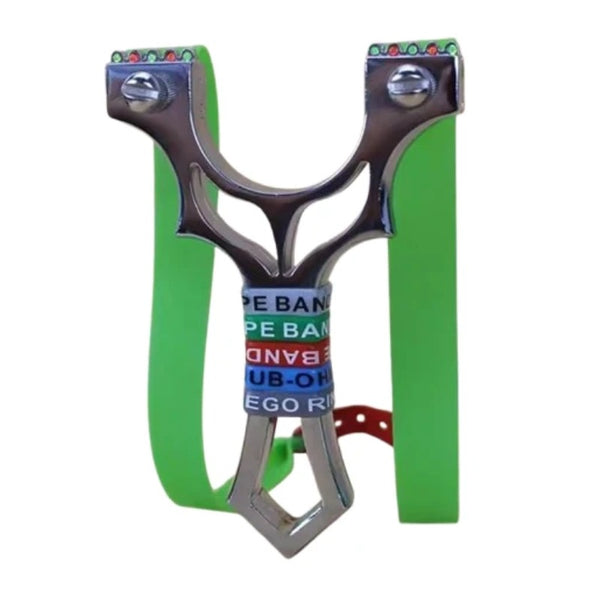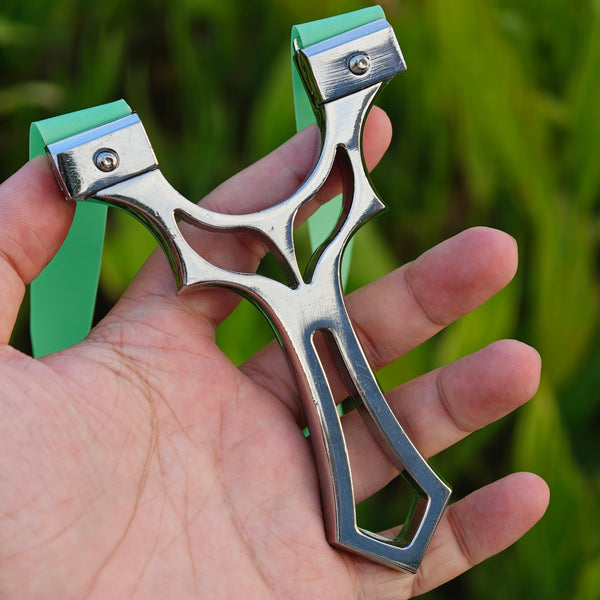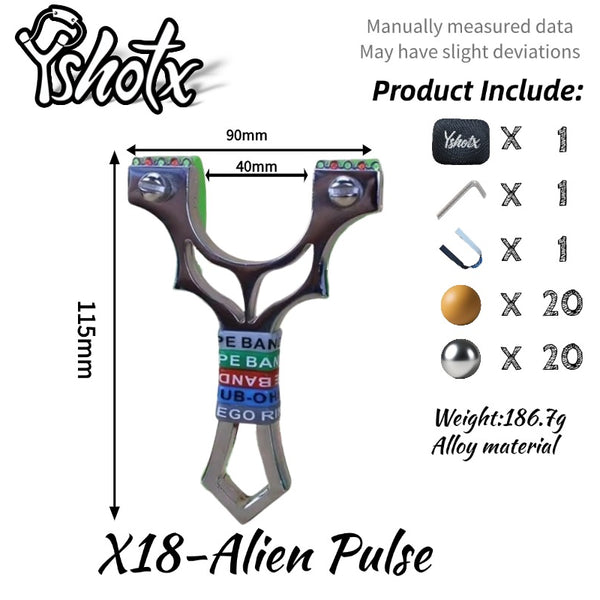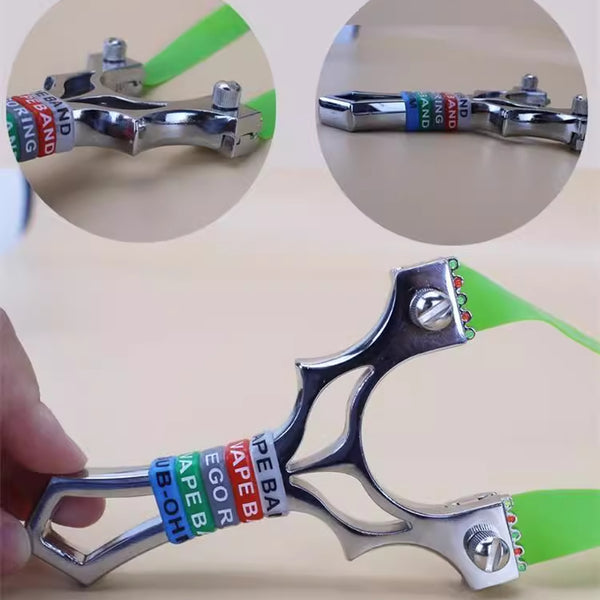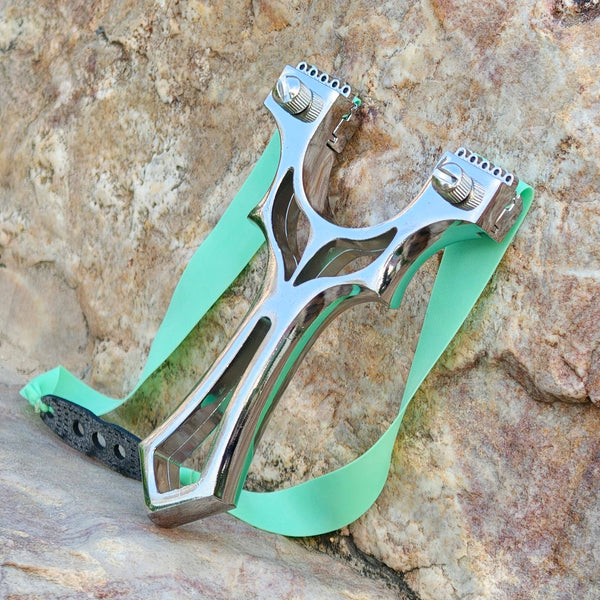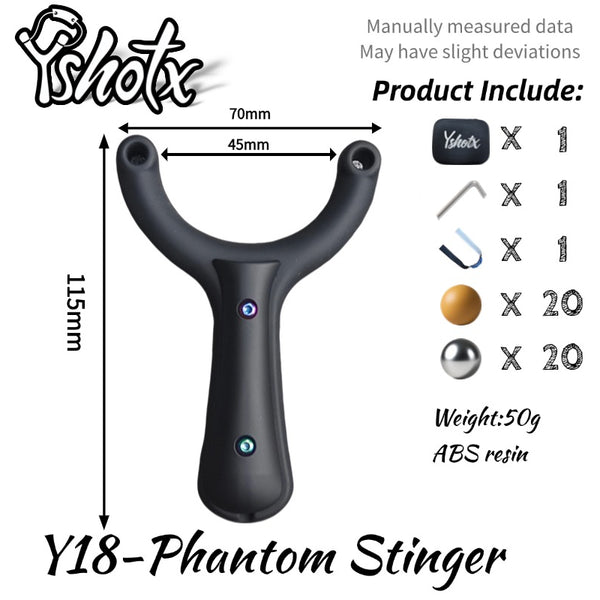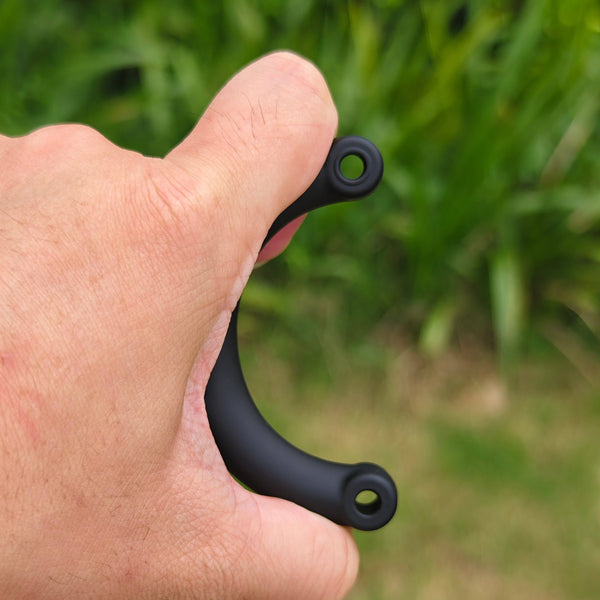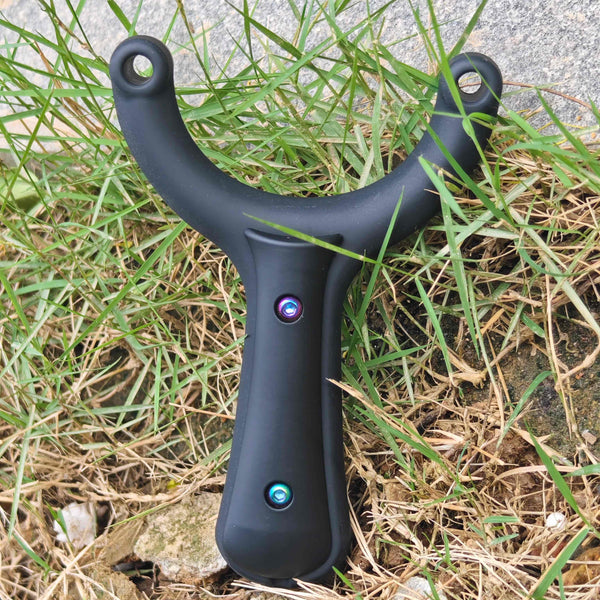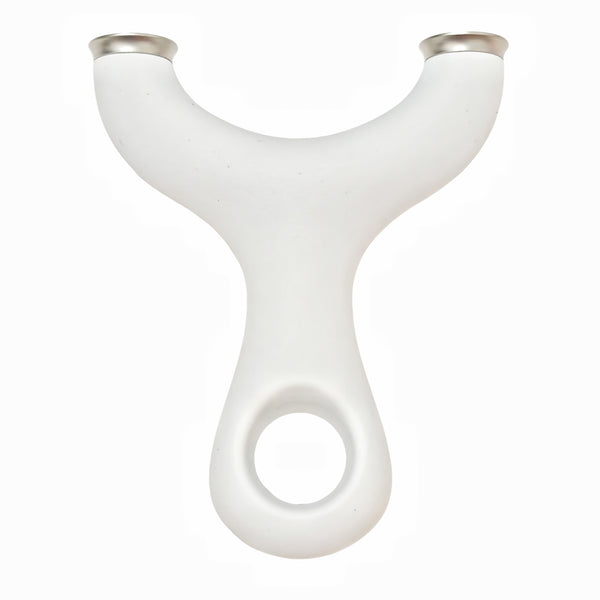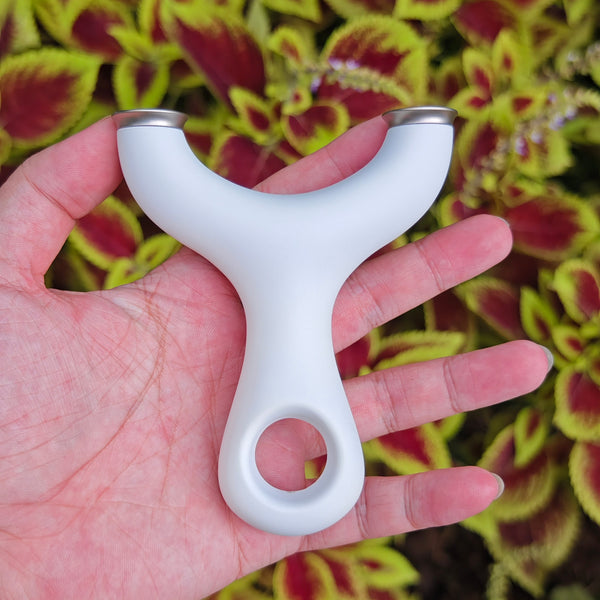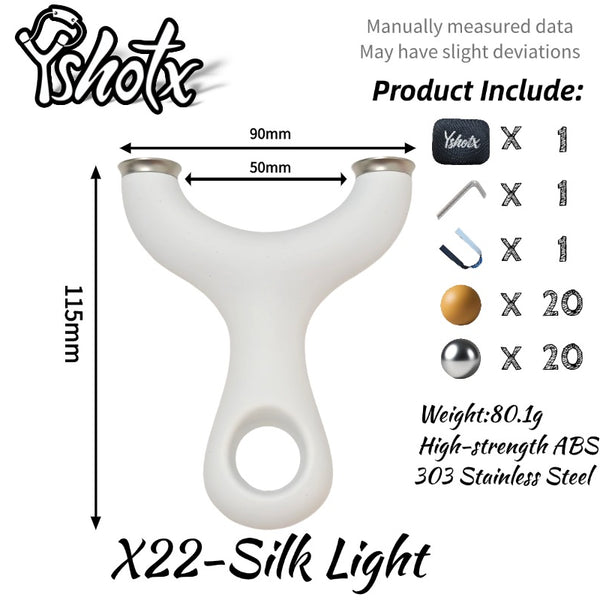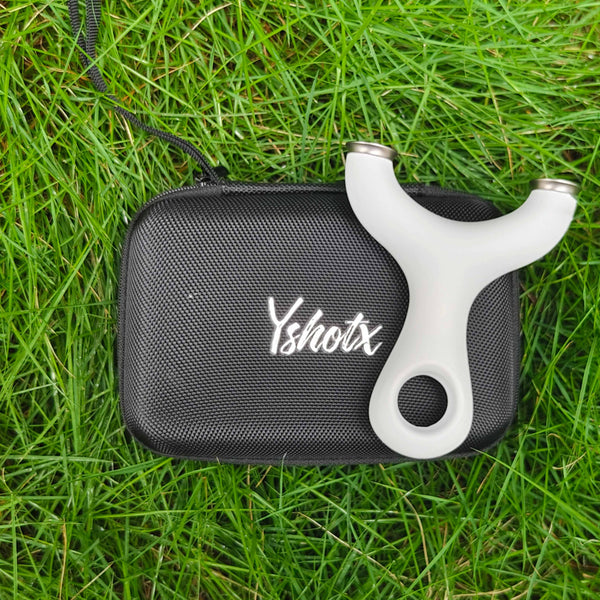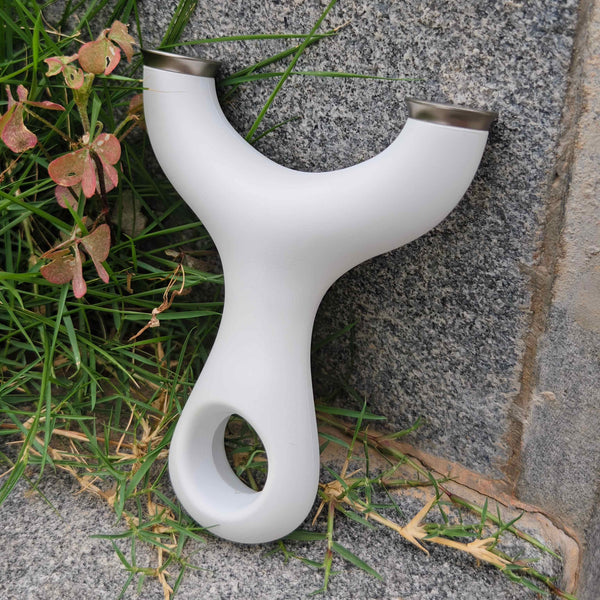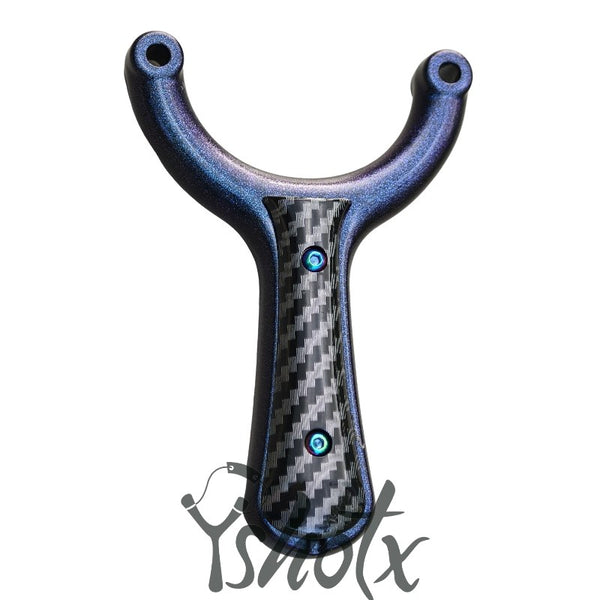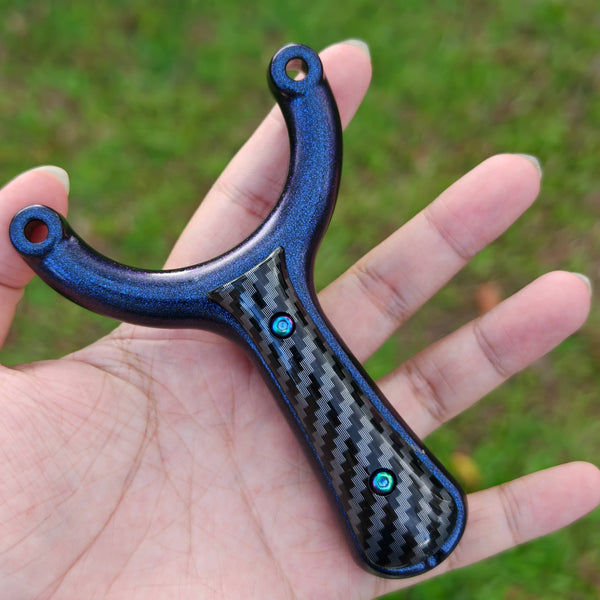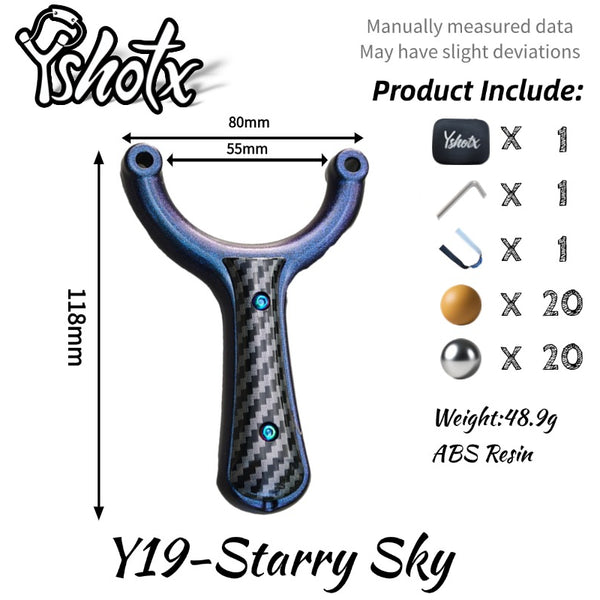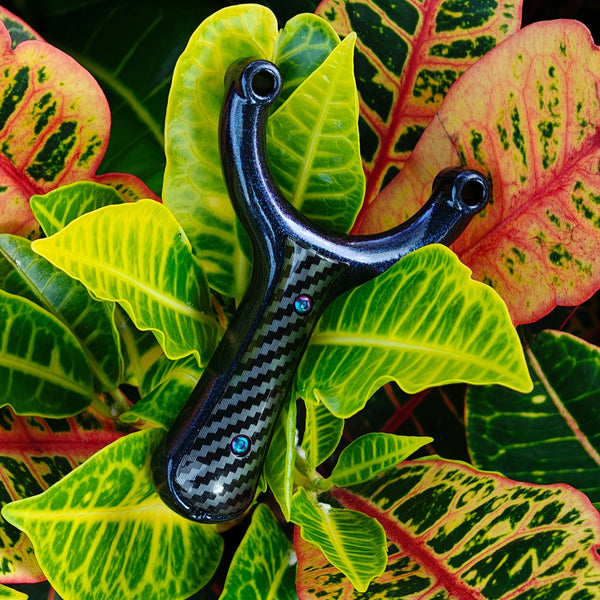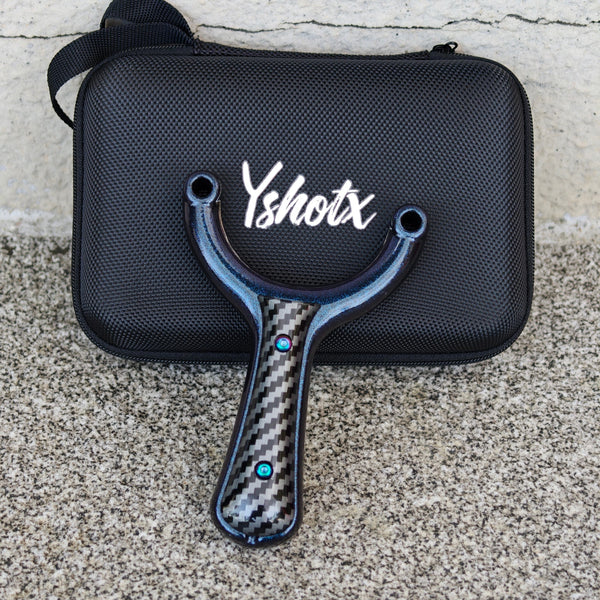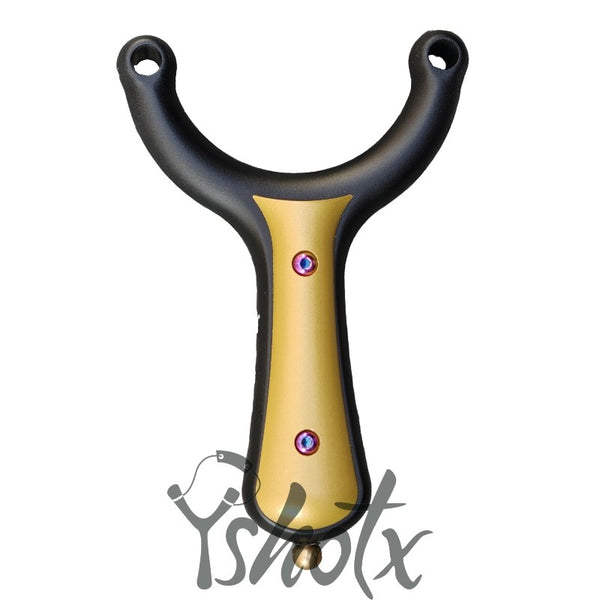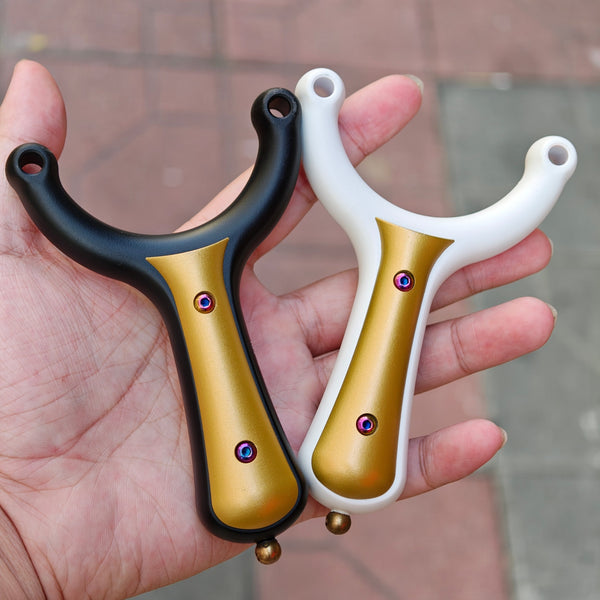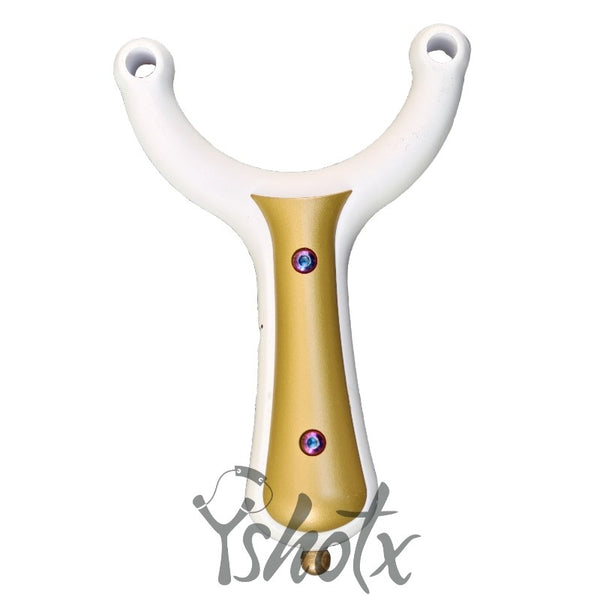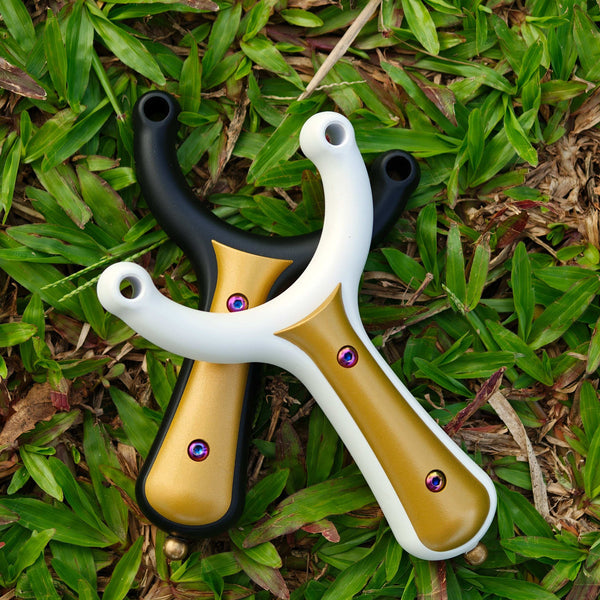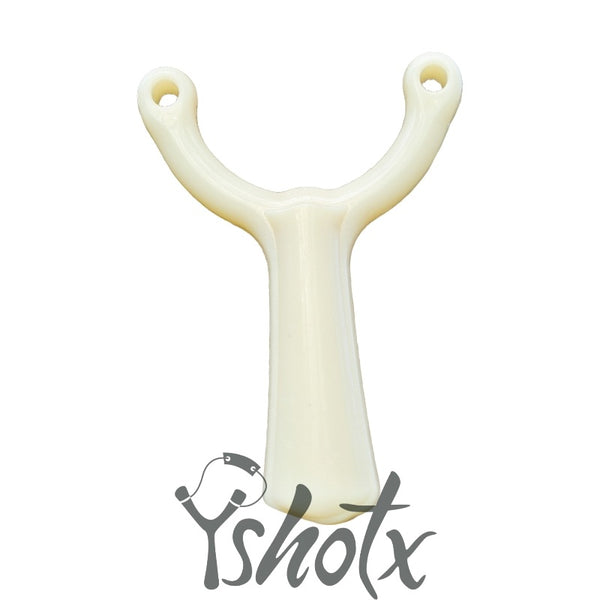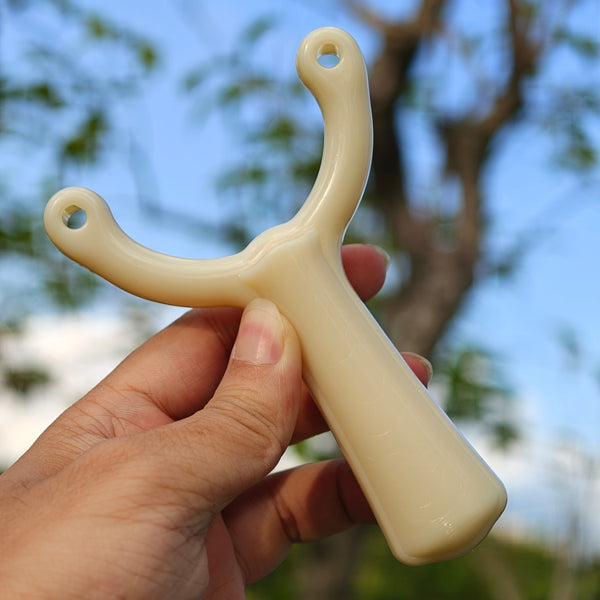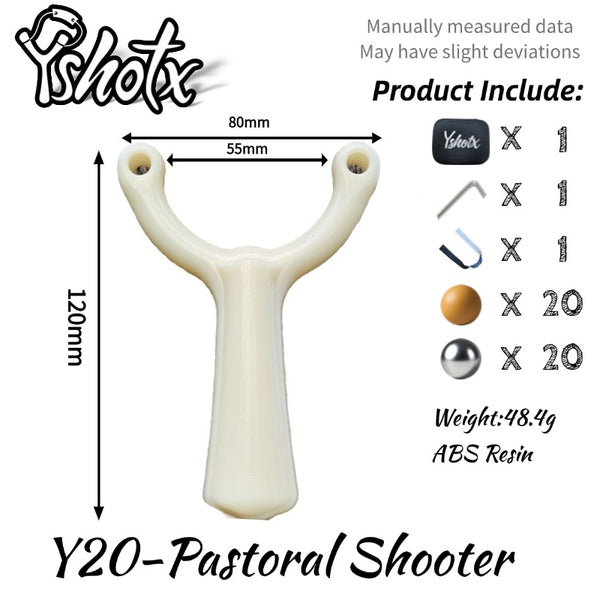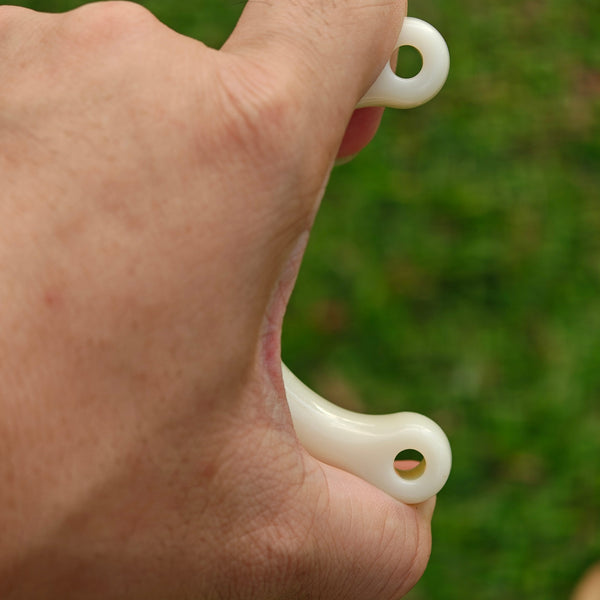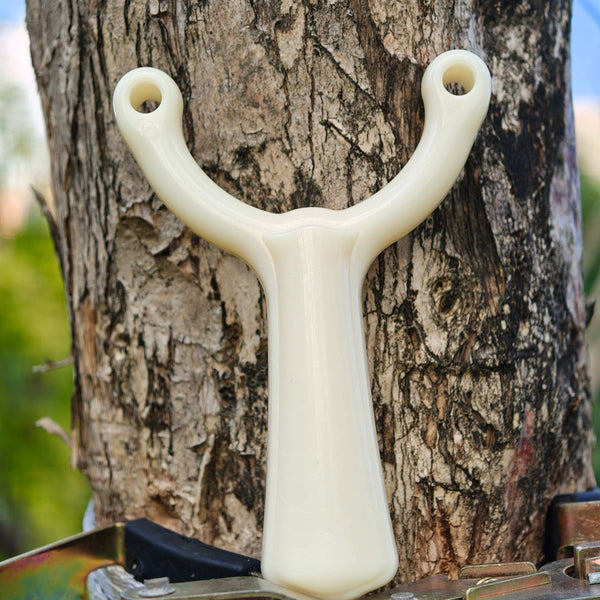Slingshots are versatile tools for recreational shooting, hunting, and competitive sports, with their rubber bands serving as the powerhouse behind every shot. Over time, even high-quality bands wear out, compromising accuracy, power, and safety. This guide provides a detailed roadmap for identifying when slingshot bands need replacing, understanding their lifespan, storing them effectively, and replacing them safely for both flat and tubular bands. Whether you're a casual shooter or a competitive marksman, these insights will help maintain peak performance.
1. Identifying Worn Slingshot Bands
Regular inspection is crucial to catch band wear before it affects performance or safety. Below are the primary indicators of degradation.
Visual Wear Signs
-
Fuzzy Edges or Fraying: Often seen near the pouch or fork, these indicate early wear, with approximately 10–15% of the band’s life remaining.
-
Small Tears, Holes, or Notches: Typically near pouch tie points, these suggest only 2–10% life remains, signaling urgent replacement.
-
Discoloration or Stress Marks: White lines or cracks indicate latex breakdown, even if no tears are visible.
Inspection Tips:
-
Examine bands under strong, indirect light, gently stretching them to reveal subtle cracks.
-
Use a magnifying glass for detailed inspection.
-
Check before each shooting session to prevent unexpected failures.
Performance Decline
Worn bands often exhibit noticeable changes in shooting dynamics:
-
Softer Pull or Reduced Recoil: The band feels less responsive, indicating loss of elasticity.
-
Lower Shot Velocity: Measurable with a chronograph or observed as shorter projectile distances.
-
Quieter Release: New bands produce a distinct “snap”; worn bands are quieter.
-
Inconsistent Accuracy: Wider shot groupings despite consistent technique.
Monitoring Suggestions:
-
Use a chronograph to track velocity changes over time.
-
Log shot groupings to detect accuracy degradation.
-
If shooting feels sluggish or inconsistent, inspect bands immediately.

The most comprehensive TTF and OTT Slingshot profile: technical deep dive with data-driven analysis
2. Understanding Band Lifespan
The lifespan of slingshot bands varies based on type, usage, and care. Below are typical ranges:
|
Band Type |
Estimated Lifespan (Shots) |
Key Factors |
|---|---|---|
|
Flat Bands (e.g., Theraband Gold) |
100–1,000 |
Taper, draw length, ammo type, storage |
|
Tapered Bands |
200–300 |
Higher stress at pouch, shorter lifespan |
|
Tubular Bands |
500–2,000+ |
Thicker structure, less surface exposure |
-
Flat Bands: High-quality flat bands, like Theraband Gold, typically last 100–1,000 shots, with single-layer bands often reaching the higher end and double-layer or tapered bands closer to 100–500 shots (Slingshot Forum).
-
Tapered Bands: Due to concentrated stress at the pouch, these wear out faster, often after 200–300 shots.
-
Tubular Bands: Their thicker construction and reduced surface area make them more durable, potentially lasting thousands of shots with proper care.
Influencing Factors:
-
Draw Length: Overstretching (e.g., beyond 5:1 ratio) accelerates wear.
-
Ammo Type: Rough or heavy ammo increases stress.
-
Usage Frequency: Daily shooting shortens lifespan compared to occasional use.
-
Storage Conditions: Exposure to UV light, ozone, or heat hastens degradation.
Recommendation: Log shot counts and inspect every 100–200 shots. Replace flat bands around 300–500 shots for moderate use, or earlier for tapered bands, to maintain consistency.

3. Causes of Premature Band Wear
Understanding why bands wear out early helps in prevention:
-
Rough Fork Edges: Can nick or cut bands during recoil.
-
Jagged Ammo: Rough projectiles, like cracked steel balls or stones, scrape bands.
-
Improper Tying: Tight knots or abrasive ties create stress points, leading to tears.
-
Environmental Exposure: UV light, ozone (from electronics), heat, or chemicals (e.g., oils) degrade latex.
-
Excessive Stretch: Pulling beyond recommended ratios (e.g., 600%) causes fatigue.
Preventive Measures:
-
Smooth fork edges with sandpaper or a polishing tool.
-
Use smooth, purpose-made ammo like steel or clay balls.
-
Employ proper tying techniques, such as constrictor knots or wrap-and-tuck.
-
Store bands away from harmful environmental factors.
More quality bands 👉 Link
4. Proper Storage to Extend Band Life
Effective storage significantly prolongs band lifespan by protecting against degradation. Key practices include:
-
Avoid Direct Sunlight: UV rays weaken latex, causing cracks and loss of elasticity (Indian Slingshot).
-
Maintain Stable Temperatures: High heat makes rubber brittle; extreme cold reduces elasticity. Aim for a cool, consistent environment (e.g., 2–4°C in a refrigerator).
-
Use Airtight Containers: Mylar or ziplock bags protect against moisture, dust, and contaminants.
-
Minimize Ozone Exposure: Keep bands away from electronics, which emit ozone.
-
Add Talcum Powder or Silica Gel: These absorb moisture, keeping bands dry.
-
Store Untied: Avoid storing bands under tension to reduce stress.
Storage Table: Do’s and Don’ts
|
Do |
Don’t |
|---|---|
|
Store in a cool, dark place |
Expose to sunlight or UV light |
|
Use airtight mylar or ziplock bags |
Store in high heat or humidity |
|
Keep away from electronics |
Use oils or chemicals near bands |
|
Add silica gel or talcum powder |
Store bands under tension |
Advanced Tip: For long-term storage, consider refrigeration in sealed bags to maintain freshness, though ensure easy access for frequent use (Yshotx).
5. When to Replace Slingshot Bands
Timely replacement prevents performance issues and safety risks:
-
Minor Wear (Fraying, Small Nicks): Replace after the next session, as failure is imminent.
-
Severe Wear (Tears, Holes, Cracks): Replace immediately; continued use is unsafe.
-
Performance Decline: If velocity or accuracy drops significantly, replace to restore performance.
-
Preventive Replacement: Even without visible wear, consider replacing flat bands every 300–500 shots to ensure consistency.
Safety Note: Worn bands can snap unexpectedly, risking injury from recoiling latex or stray projectiles. Always wear protective eyewear during shooting and replacement.
Ultimate Guide to Slingshot Rubber Band Configuration
6. How to Replace Slingshot Bands
Replacing bands varies by type. Below are detailed steps for both tubular and flat bands.
For Tubular Bands
-
Remove Old Bands: Use a sharp knife to cut the band vertically and horizontally on one arm, then pull it off. Repeat for the other arm. Avoid scratching the metal frame.
-
Select a Replacement: Purchase a band compatible with your slingshot, available at sporting goods stores or online (approx. $5–$20 USD).
-
Lubricate Arms: Pour 70–99% isopropyl alcohol into a cup and dip one slingshot arm to lubricate it.
-
Install New Band: Slide the band onto the horizontal tip and down the vertical part past the bend. Repeat for the other arm.
-
Dry and Test: Allow the alcohol to evaporate, securing the band. Test with a few low-intensity shots to ensure proper installation.
Source: WikiHow: Replace Slingshot Bands
More quality slingshots 👉 Link
For Flat Bands (Wrap-and-Tuck Method)
-
Cut New Bands: Measure your draw length (e.g., 36 inches) and cut bands to 1/5 of that (e.g., 7.2 inches) for a 5:1 stretch ratio. Taper if desired (e.g., 22–16 mm).
-
Attach to Pouch: Use the wrap-and-tuck method or constrictor knot with thin latex strips or crystal string. Insert the band through the pouch hole, fold it back, and wrap tightly with tying material.
-
Attach to Frame: Secure bands to the fork using the same wrap-and-tuck method, ensuring no twists and even tension.
-
Check Alignment: Ensure the pouch is centered and bands are straight.
-
Test: Perform low-intensity shots to verify performance.
7. Tips to Extend Band Life
-
Smooth Fork Edges: Use sandpaper to eliminate rough spots that could cut bands.
-
Use Smooth Ammo: Opt for steel or clay balls to avoid abrasion.
-
Proper Tying: Use lightweight, non-abrasive materials like crystal string or thin latex for tying.
-
Regular Inspections: Check bands every 100–200 shots or before each session.
-
Avoid Overstretching: Stick to a 400–500% stretch ratio to minimize fatigue.
-
Protective Coatings: Some users apply latex-safe protectants like Formula 303, though effectiveness varies.
Maintenance Schedule:
-
Daily Shooters: Inspect weekly or every 100 shots.
-
Occasional Shooters: Check before each session.
-
Log Shots: Track usage to anticipate replacement needs.
Shooting Slingshots in Cold Weather: How to Maintain Accuracy with Rubber Bands ❄️
8. Safety Considerations
-
Wear Protective Eyewear: Prevent injury from snapping bands or ricochet.
-
Inspect Before Use: Ensure no visible damage before shooting.
-
Safe Environment: Test new bands in a controlled range to avoid accidents.
-
Proper Disposal: Cut used bands into small pieces to prevent reuse.
Conclusion
Maintaining slingshot bands through regular inspection, proper storage, and timely replacement ensures optimal performance and safety. By understanding wear signs, lifespan variations, and correct replacement techniques for both flat and tubular bands, you can enhance your shooting experience. Use a chronograph to monitor performance, keep a shot log, and prioritize safety with protective gear. With these practices, your slingshot will remain reliable for backyard fun, hunting, or competitive shooting.








